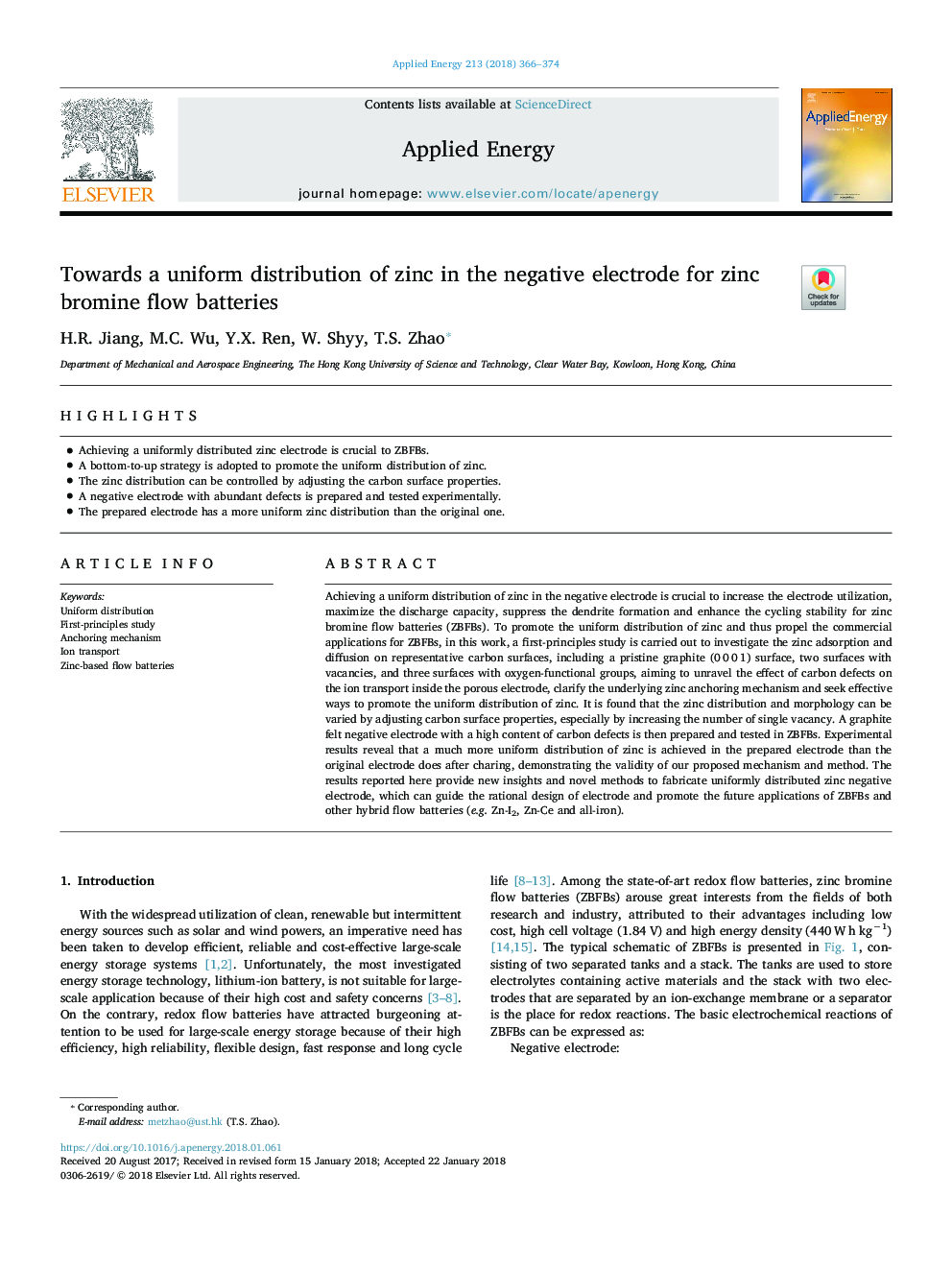| Article ID | Journal | Published Year | Pages | File Type |
|---|---|---|---|---|
| 6680807 | Applied Energy | 2018 | 9 Pages |
Abstract
Achieving a uniform distribution of zinc in the negative electrode is crucial to increase the electrode utilization, maximize the discharge capacity, suppress the dendrite formation and enhance the cycling stability for zinc bromine flow batteries (ZBFBs). To promote the uniform distribution of zinc and thus propel the commercial applications for ZBFBs, in this work, a first-principles study is carried out to investigate the zinc adsorption and diffusion on representative carbon surfaces, including a pristine graphite (0â¯0â¯0â¯1) surface, two surfaces with vacancies, and three surfaces with oxygen-functional groups, aiming to unravel the effect of carbon defects on the ion transport inside the porous electrode, clarify the underlying zinc anchoring mechanism and seek effective ways to promote the uniform distribution of zinc. It is found that the zinc distribution and morphology can be varied by adjusting carbon surface properties, especially by increasing the number of single vacancy. A graphite felt negative electrode with a high content of carbon defects is then prepared and tested in ZBFBs. Experimental results reveal that a much more uniform distribution of zinc is achieved in the prepared electrode than the original electrode does after charing, demonstrating the validity of our proposed mechanism and method. The results reported here provide new insights and novel methods to fabricate uniformly distributed zinc negative electrode, which can guide the rational design of electrode and promote the future applications of ZBFBs and other hybrid flow batteries (e.g. Zn-I2, Zn-Ce and all-iron).
Related Topics
Physical Sciences and Engineering
Energy
Energy Engineering and Power Technology
Authors
H.R. Jiang, M.C. Wu, Y.X. Ren, W. Shyy, T.S. Zhao,
